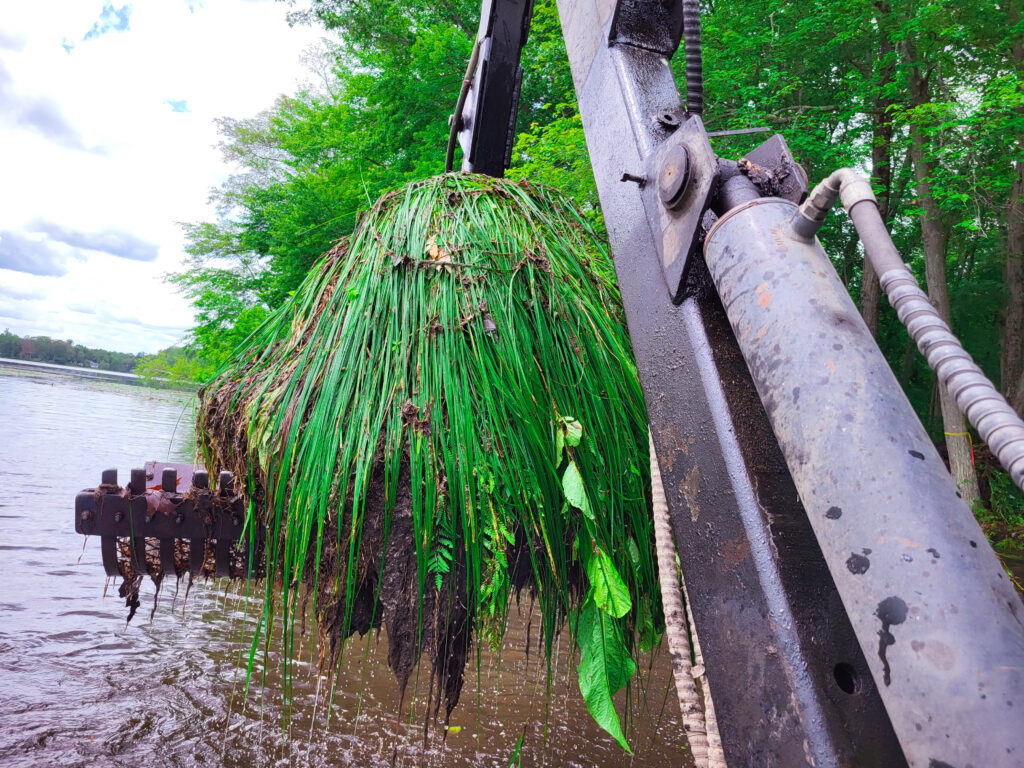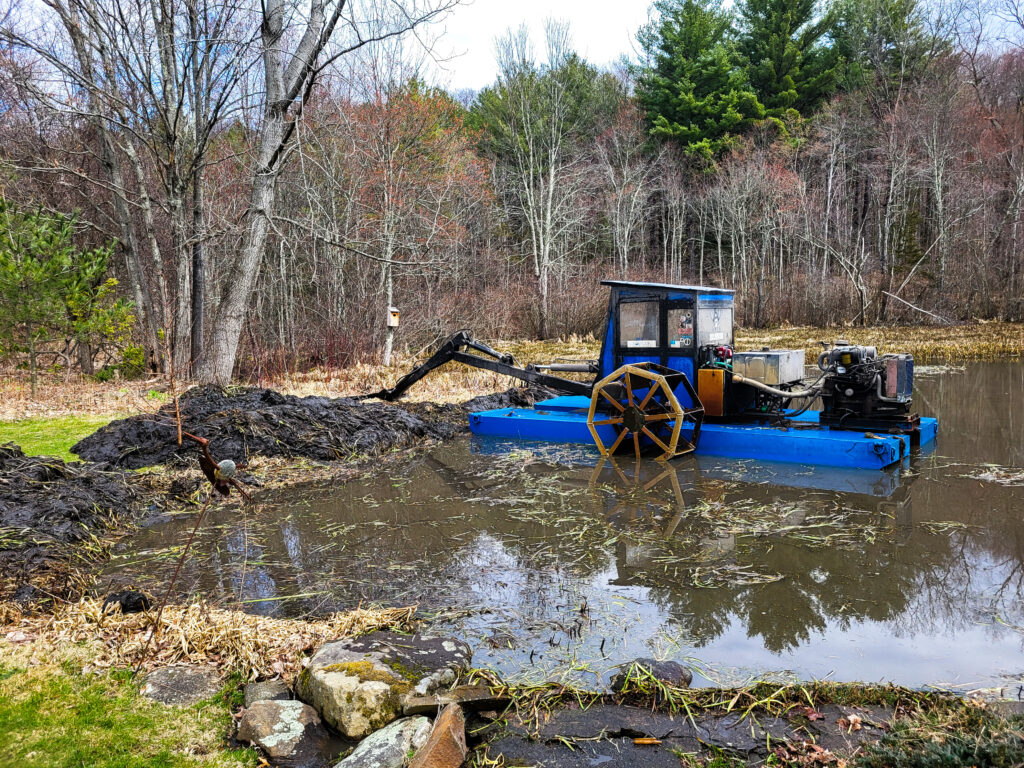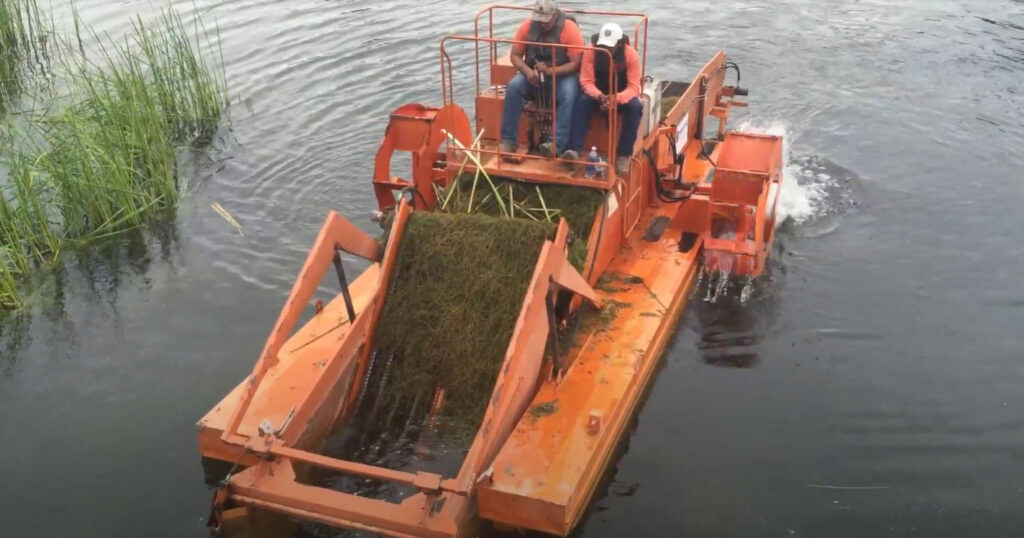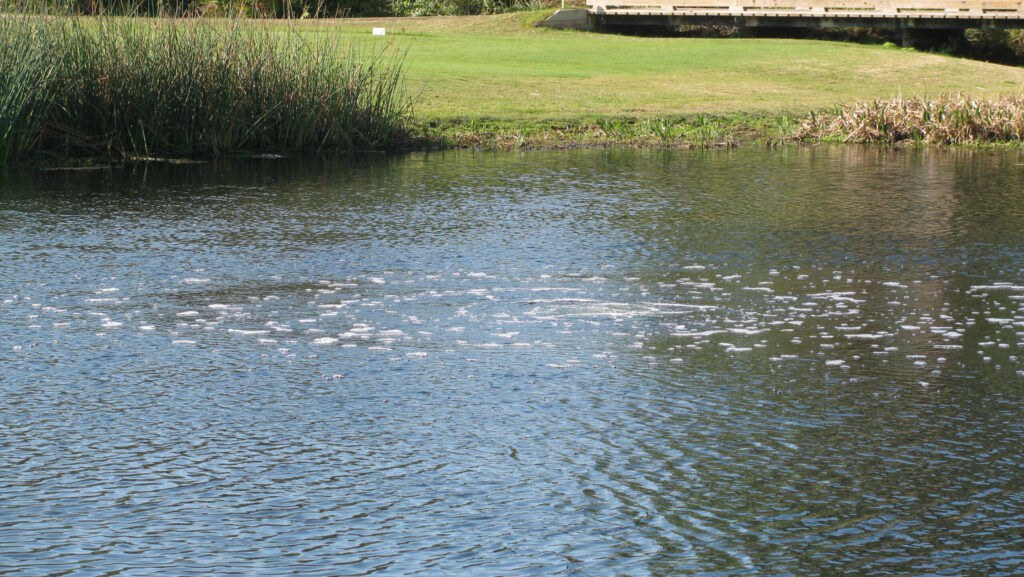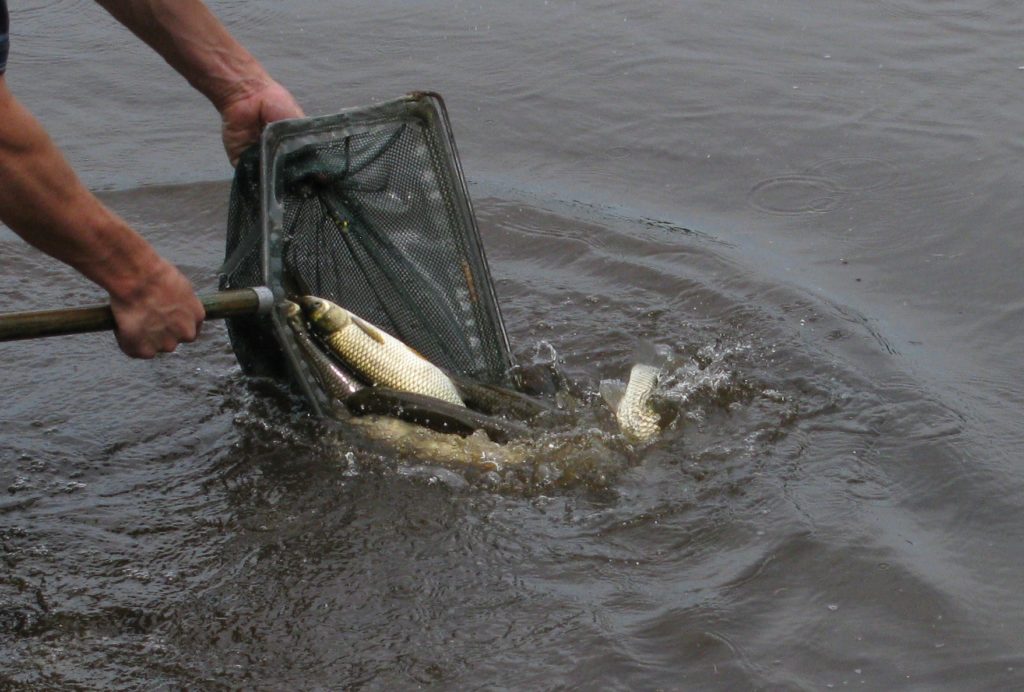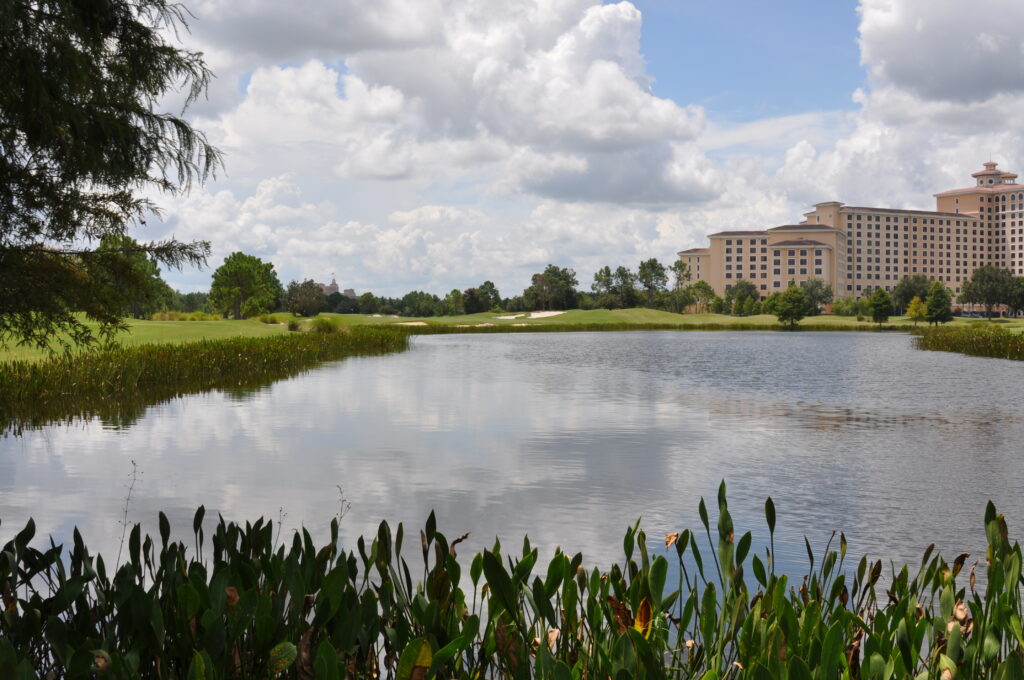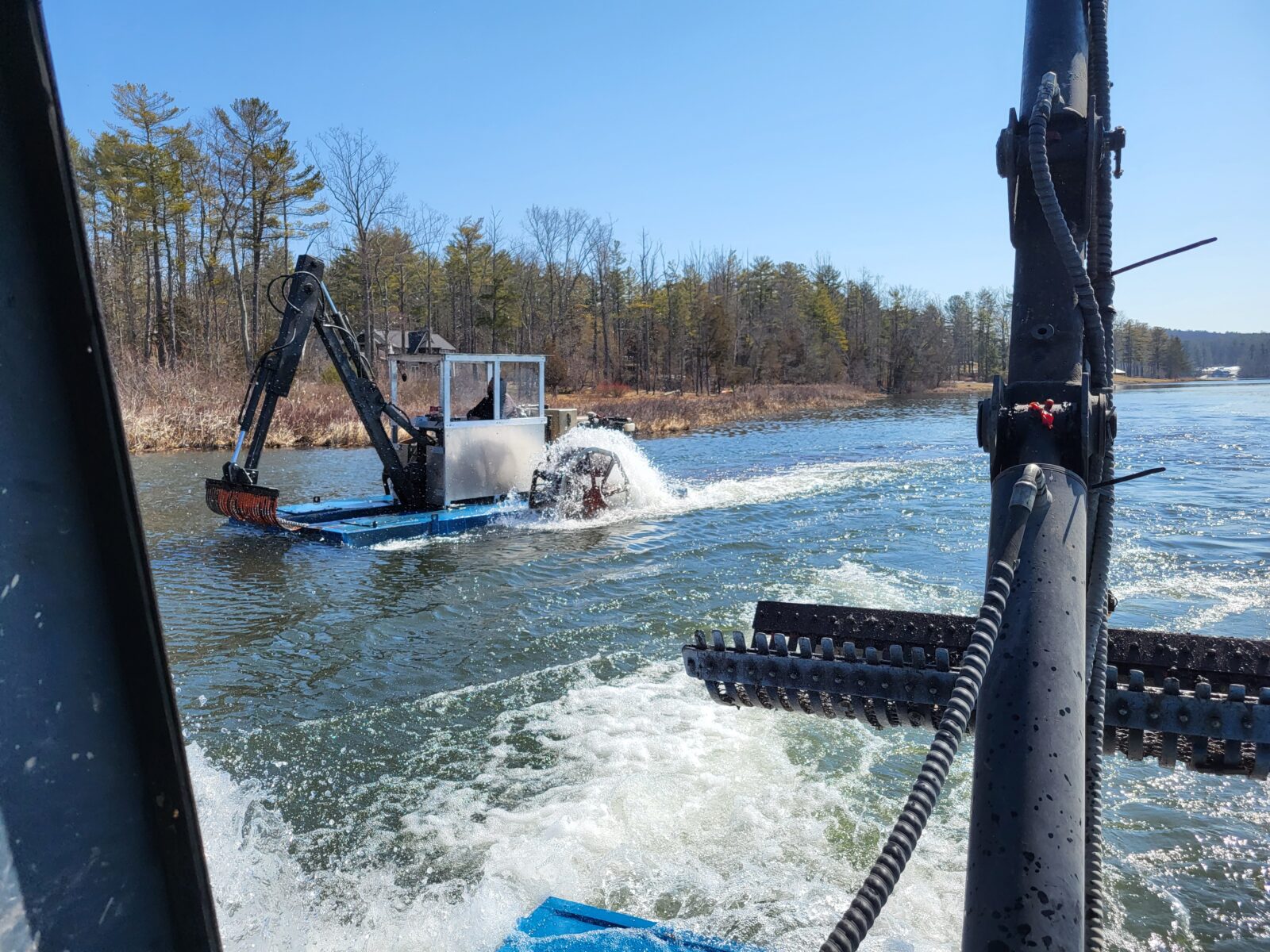
Which Aquatic Weeds Can You Remove Mechanically?
Aquatic weeds are a nuisance in lakes, ponds, and other bodies of water. They can disrupt the natural ecosystem and limit recreational activities such as fishing, swimming, and boating. Communities also rely on their waterbodies for the collection of stormwater, but overgrown weeds can block and damage this important equipment, increasing the risk of dangerous flooding. Though aquatic herbicides can be helpful tools to quickly eliminate undesirable vegetation, many stakeholders prefer a natural approach. Mechanical removal is an alternative solution that can be used to control nuisance weeds and restore the waterbody as a recreational and functional asset.
Aquatic experts rely on two types of mechanical equipment – hydro-rakes and harvesters. Before choosing the method of control, it is important to identify the target weed species. Professionals are trained in the proper identification of aquatic weeds, many of which resemble beneficial native plants. From there, experts can determine which equipment is best suited to remove the weeds.
What Is Mechanical Hydro-raking?
A mechanical hydro-rake is a floating barge equipped with a backhoe and clamshell bucket that can scoop out detritus and submersed plant matter and rhizomes that are rooted in the bottom sediments. Removing the entire plant helps limit regrowth. However, because many submersed weeds can reproduce through fragmentation, many professionals recommend hydro-raking projects 1-2 times annually until full control has been established.
Here are some of the most common aquatic weeds that can be removed through hydro-raking:
Eurasian Watermilfoil (Myriophyllum heterophyllum)
Eurasian Watermilfoil is a fast-growing weed with long feathery leaves. Each plant can grow up to 20 feet in length and aggressively outcompete native species. Eurasian Watermilfoil is considered one of the most problematic invasive aquatic plants in the United States, and can cause significant damage by clogging water intake pipes, impeding the flow of water, and tangling boat motors.
Hydrilla (Hydrilla verticillata)
Hydrilla is an invasive aquatic plant with dense branching stems that can grow up to 20 feet long. Each stem is covered in small, pointed leaves with serrated edges, giving them a saw-toothed appearance. Hydrilla is a highly adaptable weed that can grow in a variety of water conditions, including slow-moving or stagnant water, and has been known to entangle and even drown swimmers.
Curly-Leaf Pondweed (Potamogeton crispus)
Invasive Curly-Leaf Pondweed has glossy, dark green leaves that are typically 2-4 inches long with wavy edges that give them a curly appearance. The leaves are arranged alternately on the stem, which can grow up to 10 feet in length. Curly-Leaf Pondweed is extremely fast-growing and can cause significant damage to native ecosystems and essential stormwater infrastructure.
Other common submersed weeds include Fanwort, Mudmat, and Variable Milfoil.
Can Hydro-raking Remove Rooted Plants?
Hydro-raking is also effective for the management of some plants that are often rooted into the shallow, stagnant waters, such as Cattails and Water Lilies. Though these are native plants, they can repopulate quickly due to their aggressive growth rate and rhizomatous roots (horizontal creeping root systems). The hydro-rake can remove these complex root systems, helping to establish control for 2-3 years or more.
Watch the Hydro-rake In Action
What Is Mechanical Harvesting?
A mechanical harvester is a similar floating vessel equipped with a conveyer and cutting mechanism that removes free-floating aquatic weeds on the surface. Floating aquatic weeds, which do not have true root systems, tend to grow in extremely tight proximity to one another, crowding out desirable native plant species and making it difficult to navigate waterbodies for boating and swimming.
Here are some of the most common aquatic weeds that can be removed through harvesting:
Giant Salvinia (Salvinia molesta)
Giant Salvinia is an invasive floating fern composed of chain-like oblong leaves with sharp hairs. The aquatic weed can quickly form dense floating mats that block sunlight and prevent the transfer of oxygen on the surface of the water. Native plants and animals can suffer and die-off as a result.
Water Hyacinth (Eichhornia crassipes)
Water Hyacinth has large, round leaves with a shiny, waxy surface. Though it is a floating weed, it produces long, feathery roots that can extend several feet below the water’s surface. Water Hyacinth is extremely invasive and can overtake an entire waterbody without intervention.
Water Chestnut (Trapa natans)
Water Chestnut can be identified by its triangular serrated floating leaves arranged in a rosette pattern that radiates from a central stalk. Each rosette can produce up to twenty spiked nutlets, which allow populations to explode in a few short seasons.
Other common floating weeds include Water Lettuce, Duckweed, and Yellow Floating Heart.
Watch the Harvester Remove Floating Weeds
Prevention Is Key: Manage Your Water Proactively
Controlling aquatic weeds can be costly and time-consuming – and can cause significant stress to residents and community leaders. Through an Annual Management Program, professional monitoring can give stakeholders peace of mind that any new infestation will be identified and managed early on. It is also recommended to inspect and clean boats and water equipment before and after a day on the water. Many weeds reproduce via fragmentation, meaning small pieces can quickly populate a new ecosystem.
How to Maintain Balanced Water Quality
Consistent monitoring and inspections should be conducted alongside other preventative measures such as water quality testing to track changes in water chemistry over time. Imbalances in nutrient levels, pH, and other parameters may indicate that the waterbody is more susceptible to nuisance aquatic weed growth. In response, aquatic experts may recommend solutions like nutrient remediation, biological bacteria, or aeration to support more balanced water quality conditions.
Control Weed Growth with Triploid Grass Carp
In some cases, aquatic experts may also recommend stocking Triploid Grass Carp. Though grass carp are considered non-native, some states allow permits for licensed professionals to stock carp that have been sterilized. Grass carp are voracious eaters that will help keep nuisance weeds at bay, although they may also consume non-target plants. Stakeholders can work with aquatic experts to determine if grass carp stocking is the right solution for their waterbody and obtain the correct permits as needed.
Maintain Control of Plant Growth with Regular Maintenance
Ultimately, it’s important to remember that no plant species is inherently bad. However, when introduced to non-native areas, they have fewer natural predators and can quickly disrupt the natural harmony of the ecosystem. It’s up to each of us to keep an eye out for signs of aquatic weed infestations and alert experts as soon as possible. Rapid response is critical to prevent the spread so our waterbodies can continue functioning as intended and serving as beautiful centerpieces around our homes and communities.
SOLitude Lake Management is a nationwide environmental firm committed to providing sustainable solutions that improve water quality, enhance beauty and preserve natural resources.
SOLitude’s team of aquatic scientists specializes in the development and execution of customized lake, stormwater pond, wetland and fisheries management programs. Services include water quality testing and restoration, algae and aquatic weed control, installation and maintenance of fountains and aeration systems, shoreline erosion control, muck and sediment removal and invasive species management. SOLitude partners with homeowners associations, golf courses, private landowners, businesses and municipalities. SOLitude Lake Management is part of Rentokil, a leading business services company, operating across the United States, Canada and Puerto Rico.
For more information, visit SOLitude Lake Management at solitudelakemanagement.com, and connect on Facebook, LinkedIn and Twitter.








